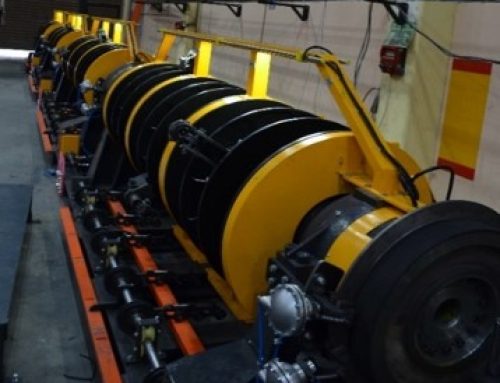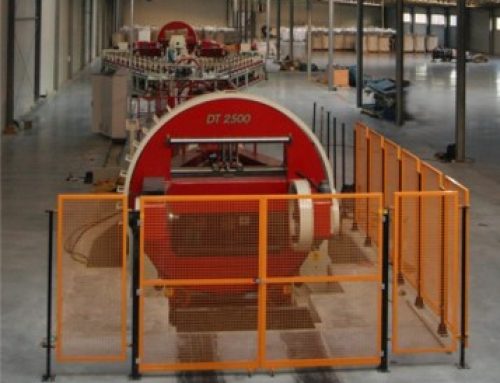Cable tape machines are designed to apply tapes on cables and wires in an efficient and accurate manner. These machines are used in the production and processing of cable across various industries including telecommunications.
Cable taping machines are primarily used to wrap insulation or shielding around cables in order to improve their performance, durability and safety. The machines can be used to tape a variety of cables, including thin electrical wires and thick industrial cables.
Modern cable tape machines have advanced features like automated controls, adjustable tension settings and programmable operation. Automation not only increases productivity, but also reduces human error. This results in better quality and reliability for the taped cable.
Cable repair and maintenance are other applications of cable tapeing machines. The precise application of the tape is crucial for restoring the cable integrity and insulation.
Cable taping machines offer efficiency, accuracy and versatility when it comes to the application of tapes. They are essential tools for the cable manufacturing industry.
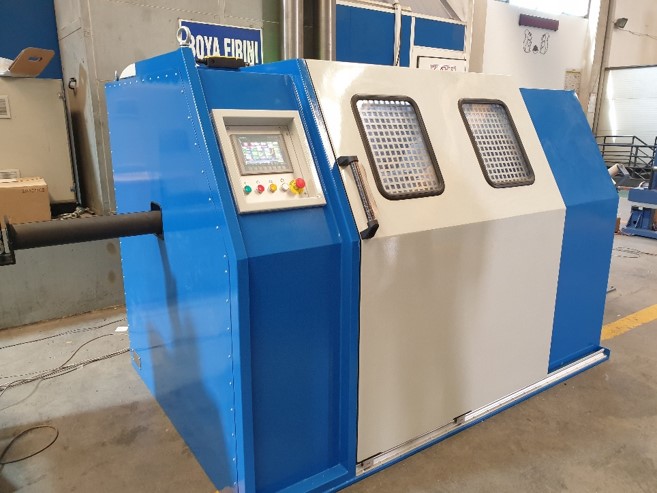
Paper cable taping machine
Recommended blog post: Understanding the Cable Extrusion Process
What is a Cable Taping Machine?
Cable tape machines are used to manufacture and process cables. They are primarily used to apply tapes on cables and wires. These machines are designed to ensure a uniform and precise application of insulation, shielding or other materials on cables. This enhances their electrical properties, durability and overall performance.
Cable Manufacturing Importance:
Cable tape machines are essential in cable production for many reasons.
- Precision & Consistency: These tapes ensure consistency in the application of tapes to cables. This is essential for maintaining uniform electrical properties & mechanical strength.
- Efficiency These machines increase production efficiency by automating the tape-application process. They also reduce labor costs and minimize production time.
- Quality Assurance They minimize human error when applying tape, thereby enhancing reliability and durability of cables.
- Versatility Cable tapeing machines are able to handle a variety of cable sizes, types and shapes, meeting the needs of diverse industries, such as telecommunications. aerospace, automotive and energy.
Evolution in Cable Taping Technology:
Over the years, technology has advanced significantly in cable tape machines.
- From Manual to Automated At first, tape was applied manually. This was time-consuming and subject to errors. Modern machines feature automated controls and precise tape tension settings.
- Integration Advanced Materials: Cable taping machines have been adapted in response to the new adhesive and material technologies. Now, they can apply specialized tapes with enhanced electrical insulation, increased fire resistance and improved environmental protection.
- Connectivity and Digitalization: Modern machines have digital interfaces that allow for data collection and remote monitoring. They can also be integrated into smart manufacturing environments.
- Customization & Flexibility: Manufacturers now have the flexibility to customize tape machines according to their specific requirements. This includes different tape widths and speeds as well as application methods.
In general, the evolution in cable tape technology has resulted in improved productivity, better product quality and the ability to comply with increasingly strict regulatory and performance standards within the cable manufacturing industry. These machines are essential for ensuring reliability and efficiency in cables used worldwide.
Early Methods for Cable Taping:
In the early stages, tape-making was a manual process. Workers would use hand tools like tape dispensers and handheld applicators to wrap insulation or shielding material around cables. Manually wrapping cables with insulating or shielding materials was labor intensive and susceptible to variations in tension. This could lead to inconsistent quality, and even compromise the performance of the cable.
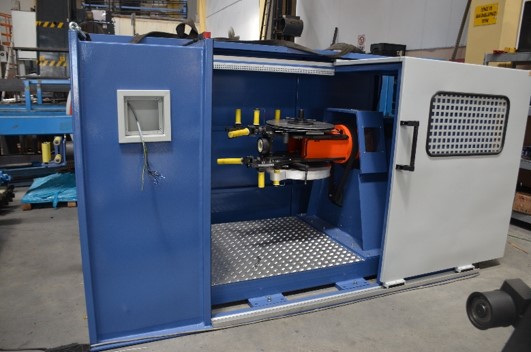
Introduction to Automated Taping machines:
Automated tape machines revolutionized cable manufacturing. The introduction of automated tape machines revolutionized the cable manufacturing industry. These machines replaced manual labor with mechanized process that improved efficiency, consistency, overall quality, and reliability. Automated tapeing machines are designed to:
- Increased Productivity: These machines can operate at a higher speed and continue to do so, resulting in a significant increase in production output when compared with manual methods.
- Ensure consistency: Automated tape machines can apply the tapes in a uniform manner, with perfect tension and alignment. The cables’ electrical properties and mechanical resistance were improved by this consistency.
- Reduce labor costs: By requiring fewer operators to supervise the taping process automated machines have helped reduce labor cost and dependence on skilled labor.
Components and Modern Cable Taping Machines
Modern cable tape machines are sophisticated equipment with several key components that optimize performance and functionality.
- System of Tape Payoff: This component ensures proper tension and alignment when taping the cable.
- Taping head: It is the taping heads that actually applies the tape to the cable. The tape can be applied in single or multiple layers, depending on cable design requirements.
- Guides and rollers that can be adjusted: This component helps guide the cable through the tape head and ensures it is aligned properly.
- Control System Modern machines have advanced control systems which allow the operator to adjust parameters like tape tension, speed and overlap. Some machines are equipped with programmable logic control (PLC) systems for automated operation, and to integrate into larger manufacturing system.
- Safety Features Operator safety is of paramount importance. Modern machines come with safety guards and emergency stop buttons to help prevent accidents.
- Optional Features Depending upon the specific needs of the manufacturer, modern machines can include features like online measurement systems to monitor tape thickness, automatic detection of splices, and quality sensors that detect defects in taped cables.
Modern cable tape machines are a combination of precision engineering and advanced automation technology to meet the demands of cable producers for reliable, high-quality products. They continue to be a driving force for innovation, enabling cable manufacturers to meet the stringent performance requirements across a wide range of applications.
Core elements and their functions in cable tape machines:
- System of Tape Payoff: Feeds the tape at a controlled speed and tension from a supply roll onto the cable.
- Taping Head:Applies tape to the cable in an uniform way. The machine can be set up to apply a single layer of tape or multiple layers depending on the specifications.
- Guides and rollers that can be adjusted: Guide the cable through the tape head and ensure it is aligned properly.
- Control system: Manages and regulates different parameters, such as the tension of the tape, speed of cable and overlap of layers. This system may also include programmable controllers for automation and integration into other manufacturing processes.
- Safety Features Assure operator safety when operating the machine. Safety guards, emergency stops buttons, and other safety features are included to prevent accidents.
- Optional features: Depending on the specific requirements, can include features like online measurement systems to monitor tape thickness, automatic detection of splices, and quality control sensor to detect defects.
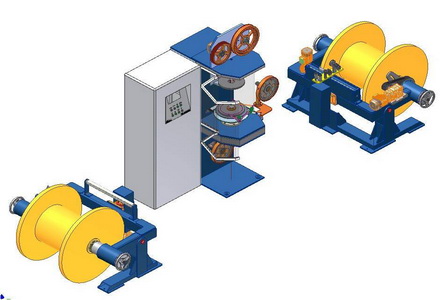
Types Of Tapes Used In The Process:
- Insulating tapes:
- Material Made of materials such as rubber, silicone, PVC and other similar materials.
- Use: Insulate the cables to protect against electrical faults.
- Shielding Tapes HTML0:
- Material: Made from aluminium or copper foil and conductive adhesive.
- Use: Protect cables from radio frequency interference or electromagnetic interference, ensuring the integrity of communication cables.
- Binding tapes:
- Material is typically made of fabric or nonwoven materials.
- Use: To bind cables together to provide mechanical strength and protect against abrasion.
- Waterblocking tapes:
- Material Gel-filled and swellable materials
- Purpose : Seals the cable core to prevent moisture from entering, increasing the cable’s durability in harsh environments.
- Fire Retardant Tapes:
- Material: Containing fire retardant additives or coats.
- Fire resistance is essential in applications that require fire safety.
Working Mechanisms of Cable Taping Machines
- Preparation of Tape:Tapes loaded on supply reels and unwinding stations.
- Feeding the Tape:The system of tape feedoff feeds the tape on the cable with a controlled tension.
- Cable Guidance:The cables are guided by adjustable guides and rollers, ensuring proper alignment and smooth passage into the taping heads.
- Application of Tape: The tape is applied to the cable at the taping head. Multiple layers of tape can be applied in a sequential manner, depending on the configuration of the machine.
- Control & Monitoring:The system controls parameters such as the tension of the tape, the speed of cable and the overlap of tape layers in order to ensure uniform, precise and accurate tape application.
- Safety and Quality Control: Safety features ensure operator safety while optional features, such as quality control sensor monitor tape application to detect defects.
- Final Product:Once the cable is taped, it will be further processed or packaged, and ready to use in a variety of applications, from automotive to aerospace.
Cable tape machines incorporate these elements and processes in order to improve the quality, efficiency, and consistency of cable production, while meeting industry standards.
Cable Taping Machines Process Overview:
- Tape preparation:Different types of tapes, (insulating shielding etc.). The tapes are prepared, and then loaded on the supply reels of the machine or onto unwinding stations.
- Feeding of Tape:The tape feedoff system on the taping machine applies the tape to the cable with a controlled tension.
- Cable Guidance:The cable moves through guides and rollers that adjust to the tension and alignment of the cable as it approaches the taping head.
- Application of Tape: At the taping head the tape is applied uniformly around the cable. The machine can be configured to apply a single layer of tape or multiple layers depending on the insulation, shielding or binding desired.
- Control & Monitoring: The control system of the taping machine manages important parameters, such as tension of the tape, cable speed, and tape layer overlap. This ensures that the tape is applied precisely and to specification.
- Safety and Quality Control:Built in safety features, such as guards and stop buttons for emergency situations, ensure the safety of operators during machine operation. Sensors that monitor quality control can be used to detect defects and inconsistencies during the application of tape.
- Final Product:Once a cable has been taped, it’s inspected to ensure quality and completeness. The cable is either further processed, or packaged to be shipped.
Automation of Taping and Precision:
- Automation Modern cable tape machines are highly automatic, reducing the reliance on human labor and minimizing errors. Automation includes tape feeding, cable guidance, tape application and parameter control. Automation improves consistency and production efficiency while reducing costs.
- Precision Advanced sensors ensure accurate application of tapes to the cable. The machines can dynamically adjust the tension of the tape and maintain consistent overlap to ensure uniform insulation or shielding. Precision is essential to meet industry standards and customer requirements.
Advanced Features Of Modern Taping Machines :
- Digital Control interfaces:Modern tape machines have digital control interfaces, which allow the operator to monitor and input parameters in real time. This allows for better control of the tape-making process, and also facilitates integration with other systems.
- Programmable Logic Controllers:PLCs automate operations by executing predefined operation sequences. They maximize efficiency, reduce set-up time and allow customization of the tape application patterns and parameters.
- Online Measuring Systems:Some machine are equipped with sensors that measure and monitor the tape thickness. This ensures consistency and conformity to specifications during production.
- Automatic Tape Splice DetectionAdvanced machine can detect tape splices automatic, minimising downtime and ensuring uninterrupted production.
- Connectivity and Remote Monitoring:Connectivity allows remote monitoring and management of machine status and performance. This allows for proactive maintenance, troubleshooting and production management at off-site locations.
- Customizable features:Manufacturers are able to customize modern tape machines in order to accommodate different cable diameters, types of taping, and specific production needs. This flexibility allows for a wide range of applications in different industries.
- Safety Improvements: Modern machines can include advanced safety protocols, such as safety sensors and interlocks, that prevent the machine from operating in unsafe conditions. This ensures operator safety.
The integration of automation, precision controls, and advanced features into modern cable tapeing machines improves overall productivity, quality assurance, operational efficiency, and cable manufacturing processes. These machines are essential in meeting the demands of industries that require reliable, high-performance cable.
Machine Learning and AI Integration:
Artificial intelligence (AI) has been integrated into cable tape machines, bringing several benefits.
- Process optimization: AI algorithms analyze data from sensors to control systems and optimize parameters like tape tension, speed and overlap during the application process. This results in improved consistency and efficiency when applying tape.
- Predictive maintenance: Machine-learning algorithms can analyze operating data to identify anomalies or predict maintenance needs before they cause downtime. This proactive approach can help maintain machine reliability while reducing unplanned disruptions.
- Quality control: AI enabled systems can monitor the quality of cable tapes in real time. They can detect any defects or deviations in quality standards. This allows for immediate adjustments to be made and minimizes production of defective goods.
- Adaptive control: Machine-learning algorithms can adapt to historical data and learn how to best apply tape for different types or conditions of production. This adaptive control provides optimal performance in a variety of manufacturing scenarios.
- Remote Management and Monitoring: AI powered systems can facilitate remote monitoring and management of machine performance. Operators are able to access real-time information, make informed decisions and manage production processes anywhere. This improves overall operational efficiency.
Customization options for different cables:
Modern cable tape machines are highly customizable and can be customized to meet the needs of customers with different cable sizes, types, and specifications.
- Adjustable parameters: Machines can be adjusted for tape tension, speed and overlap. This allows them to be fine-tuned according to different materials and cable sizes.
- Machines that can handle multiple tape types: Machines are capable of handling a variety of tapes, including waterblocking and fire retardant, as well as insulating, shielding and binding tapes. Manufacturers can meet regulatory and performance standards by switching between different tape types.
- Modular design: Certain machines have modular designs which allow easy configuration changes. This flexibility allows for different production setups, and increases scalability when production needs change.
- Programmable patterns: Advanced machine can program specific application patterns such as helical and longitudinal tapes to meet the functional and structural requirements of different cables.
- Capabilities for Integration: Machines are able to integrate with other equipment or systems. This allows seamless workflow integration, and improves overall manufacturing efficiency.

Recommended blog post: The Fascinating Tech Behind Cable Making Machines
Cable Taping Machines Benefits:
- Increased Productivity: Automating reduces the need for manual labor, increases production speed, and ensures consistency in tape application. This improves overall productivity.
- Improved Quality: Precision control over the tape application parameters leads to uniform insulation, shielding and binding of cables. This improves their electrical and mechanical performances.
- Cost Effectiveness: Reduced labour costs and optimal material usage contributes to lower production costs for each unit of cable manufactured.
- Compliance & Reliability Tape cables comply with industry standards, regulatory requirements, and strict industry requirements. They meet electrical insulation, fire resistance and environmental protection.
- Operational safety: Built in safety features protect the operator from potential hazards while operating the machine, ensuring that a safe work environment is maintained.
- Flexibility & Adaptability: Customization allows manufacturers to create a variety of cable types & configurations that meet diverse market needs.
- Innovations and Technological Advancement The integration of AI and Machine Learning technologies improves machine performance and predictive maintenance capabilities. It also enhances the competitiveness and efficiency in cable manufacturing.
Cable taping machines with AI, machine-learning, and extensive customization features offer significant advantages to manufacturers in terms of quality, productivity, flexibility, innovation and more. They are essential tools for modern cable manufacturing operations.
Efficiency of Production:
Automation and advanced control systems improve production efficiency by cable taping machines.
- Automated processes: This machine automates tape feeding, tensioning, and application. It reduces the need for manual labor, while increasing production.
- Optimized parameters: Precision control of parameters like tape tension, tape speed, and tape overlap allows for efficient tape application. This minimizes material waste, while maximizing output.
- Fast Changeovers and Setup: Modular design and programmable setting enable quick set-up and changeovers to different cable types. This increases operational efficiency and flexibility of production schedules.
Quality and Consistency Improved:
Modern cable tape machines improve the consistency and quality of taped cables.
- Uniform Tape Applicaion: Machines are used to apply tapes uniformly around cables. This is important for maintaining electrical integrity or mechanical strength.
- Features for Quality Control: Sensors and monitoring systems are built-in to detect and correct deviations in quality standards.
- Adherence To Standards: Cables that are taped precisely meet the stringent standards of industry and regulatory requirements in terms of reliability, safety and performance.
Applications across Industries:
Due to their versatility, cable taping machines are used in many industries.
- Telecommunications Used to manufacture communication cables with exact shielding and insulation in order to maintain signal integrity.
- Automotive: Required for the production of automotive cables that need to be durable, resistant to vibrations and protected from environmental factors.
- Aerospace : Used to produce aerospace cables which must be able to withstand extreme conditions including temperature changes and mechanical stress.
- Energy Sector Essential for the manufacture of power transmission cables which require robust insulation, shielding and reliability in order to ensure efficient transmission and distribution of electricity.
Power Transmission cables:
Cable taping machines are essential in the power transmission industry. They ensure the reliability and efficiency.
- Shielding and Insulation: Machines use insulating tapes on cables to shield them from environmental factors and electrical faults, increasing their durability and reliability.
- High-Voltage Applications: Able to handle high-voltage requirements with specialized tapes which provide adequate dielectric strength and insulation.
- Fire Resistant: Machines are able to apply fire retardant tapes on power cables. This ensures safety in the event of a fire and meets regulatory fire safety standards.
- Customization to Specifications: Machines provide customization options for power transmission cables that meet specific requirements, including varying diameters and insulation thicknesses. They also offer shielding configurations.
Cable taping machines are a significant contributor to the quality, efficiency and reliability of cable production in many industries. They also play a crucial role in the safety and performance of the power transmission cables that are used in the energy distribution networks around the world.
Technical Expertise in Machine Operation:
To ensure maximum performance and productivity, it is important to have technical knowledge when operating cable tape machines.
- Training & Familiarization: Operators must undergo comprehensive training to understand machine operation. This includes understanding control interfaces and setting parameters (tensions, speeds, overlaps) as well as handling different types tapes.
- Monitoring & Adjustment: Constantly monitor machine outputs, and adjust parameters as necessary to maintain uniform application of tape and compliance with quality standards.
- Troubleshooting: Ability quickly identify and fix common problems such as sensor errors, mechanical malfunctions, or tape feeding issues.
- Safety protocols: Adherence of safety protocols and procedures in order to provide a safe work environment for operators, and to prevent accidents when operating machines.
Troubleshooting and Maintenance Tips:
For maximum machine longevity and uptime, it is essential to have effective maintenance and troubleshooting practices.
- Regular Inspections: Establishing a routine maintenance schedule, including lubrication and cleaning of components, as well as inspection and testing to ensure smooth operation.
- Predictive maintenance: Using predictive maintenance techniques such as monitoring machine metrics and utilizing data analytics to anticipate potential issues and address them before they escalate.
- Prompt response to issues: Develop a systematic approach for troubleshooting. This includes documenting and analysing machine errors, using diagnostic tools, and working with maintenance teams and technical support as needed.
- Management of Spare Parts: Maintaining a stock of critical spare parts in order to speed up repairs and minimize downtime if a component fails.
Conclusion
A recap of the importance of cable tape machines:
Cable tape machines are essential in the manufacturing sector by:
- Increasing Efficiency: Automating production processes to increase output and reduce labor costs.
- Improving quality: Assuring consistent, precise tape application leads to cables of higher quality with reliable electrical properties.
- Meet Diverse Industry Demands: Serving a variety of sectors, including automotive, aerospace and energy, with customized cable solutions.
Future Outlook for the Industry –
Cable taping machines are poised to advance in the future:
- AI and IoT Integration: Continued integrating artificial intelligence (AI), and Internet of Things technologies (IoT) to improve predictive maintenance capabilities, optimize manufacturing processes, and enhance machine learning algorithms for greater efficiency and quality controls.
- Smart manufacturing: Adoptions of smart manufacturing principles including real-time monitoring and data analytics as well as connectivity between production systems, to allow proactive decisions and agility when responding to market demand.
- Sustainability in the Environment: The development of eco-friendly processes and materials for cable manufacture, supported by innovative tapeing machines that reduce waste material and energy.
Cable taping machines are a cornerstone in modern manufacturing, enabling efficiency, quality and innovation across diverse industries. These machines will continue to play a vital role as technology evolves, helping the cable manufacturing industry meet customer demands and sustainability goals.


